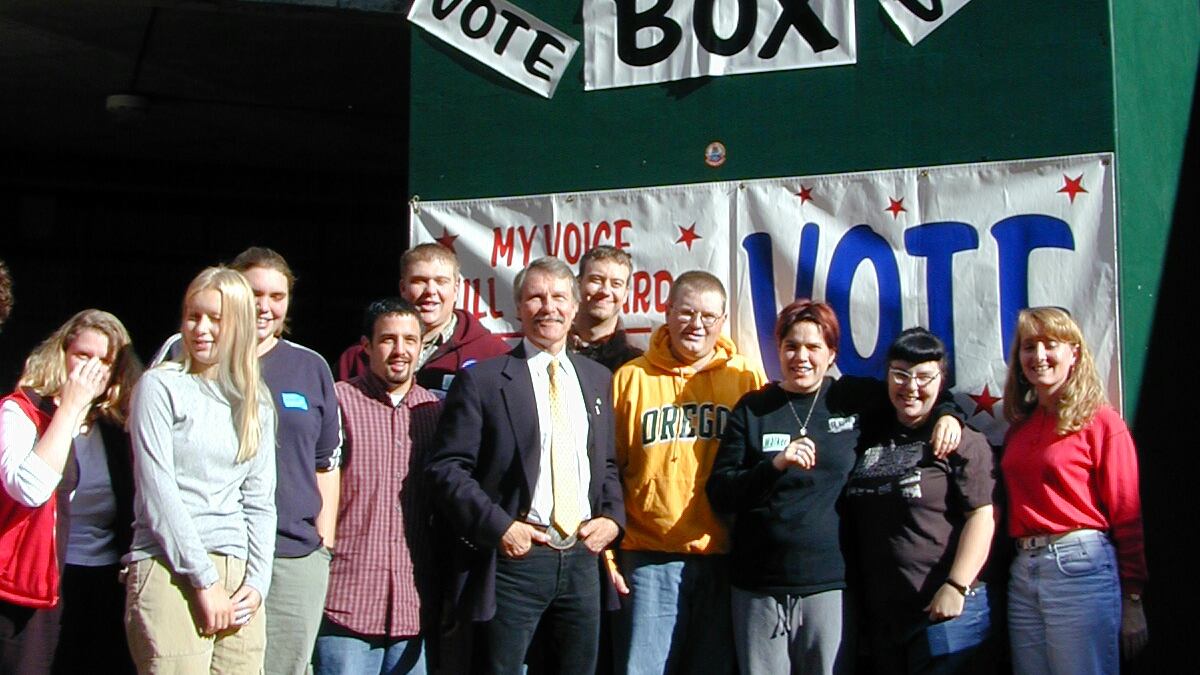What was once one of the largest, most effective grassroots political groups in Oregon—and an incubator for budding politicos—quietly turned out the lights earlier this month.
On Oct. 9, the Oregon Student Association announced its closure. “For several years, OSA has faced challenges related to our organizational structure and funding mechanisms,” the organization said in a statement. “These challenges, coupled with the tragic loss of a staff member and the critical injury of our executive director in a car accident in July of 2024, have made it implausible for OSA to continue.” Oregon Public Broadcasting first reported the closure.
WHAT IT DID: OSA lobbied lawmakers on issues that mattered to students: state support for higher ed; tuition rates; grants and policies on the state’s seven university campuses. Beyond campuses, the group acted for many years as a voter registration machine. When Melissa Unger, now executive director of Service Employees International Union Local 503, the state’s largest public employee union, led the OSA, she recalls the group registered 28,000 students at the University of Oregon alone and, in 2008, registered about 60,000 students statewide. Although OSA was nonpartisan and registered many young Republicans, its high-water mark coincided with the Democratic takeover of the House in 2007, a shift from which Democrats have never really looked back.
WHY IT MATTERED: OSA leaders formed a network in politics that remains in place today. Unger and SEIU state council executive director Felisa Hagins; state Reps. Rob Nosse and Andrea Valderrama (D-Portland) and David Gomberg (D-Otis); former Reps. Jennifer Williamson (D-Portland) and Brian Clem (D-Salem); Jon Isaacs of the Portland Metro Chamber; and Phil Bentley, CEO of the Oregon Health Care Association, are just a few of its alums.
WHAT CHANGED: At least three factors undercut OSA’s role. The first came in 2013, when the Legislature effectively dissolved the centralized Oregon University System and began giving each campus more autonomy. That reduced the common interests students shared. Then came the Oregon Motor Voter law in 2016, which automated voter registration. More recently, as tuitions have continued to rise faster than students’ ability to pay, the student fees that funded OSA shrank, Hagins says, an observation confirmed by the nonprofit’s tax returns, which show dwindling revenues.
Then: tragedy. On July 1, two OSA staff members were driving in Lincoln County on their way to a staff retreat. They crashed head on into an oncoming vehicle, leaving one OSA staffer and a person in the other vehicle dead and the association’s executive director seriously injured. “It was just awful,” Nosse says. The organization, already one of the last student associations operating in the Western U.S., never recovered.
WHAT IS LOST: Unger says OSA’s closure means nobody will really speak for students in Salem and their voices will be less organized and effective on campus. “It was run by students for the benefit of students,” Unger says. “There was a focus on access and affordability and students of color that I think will get lost now.” OSA periodically flooded the Capitol with students; once built the “world’s largest ballot box” on the UO campus and handed out ice cream at the Capitol to persuade lawmakers to institute a tuition freeze (it worked, for a while). Says Hagins: “Politics will be less fun without them.”
Chasing Ghosts will return next week. Got questions about a vacancy? Send addresses to newstips@wweek.com.
